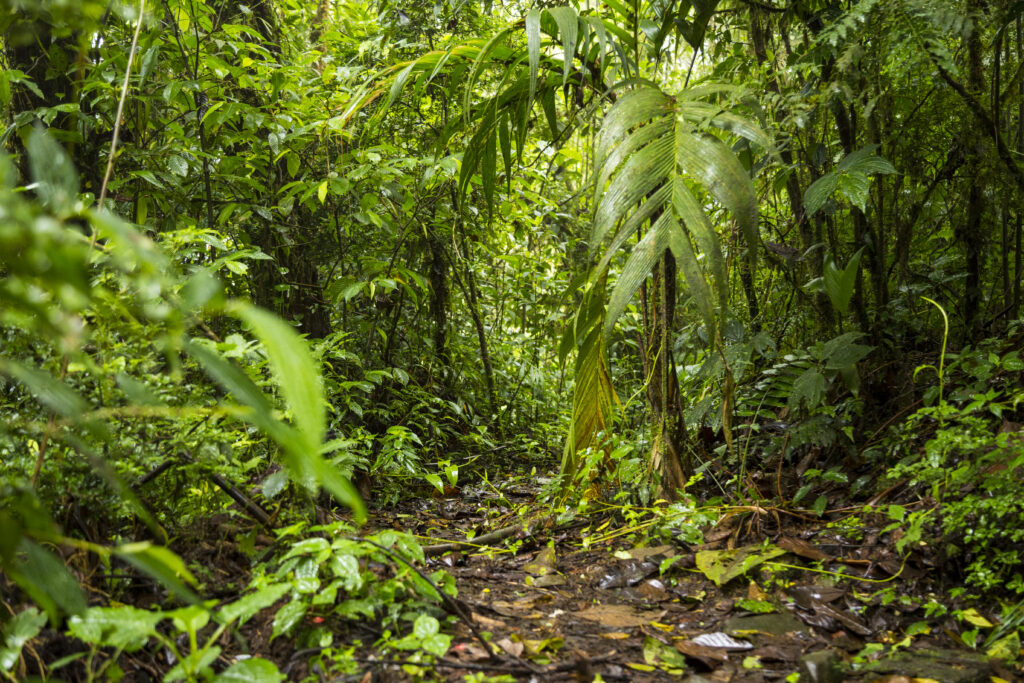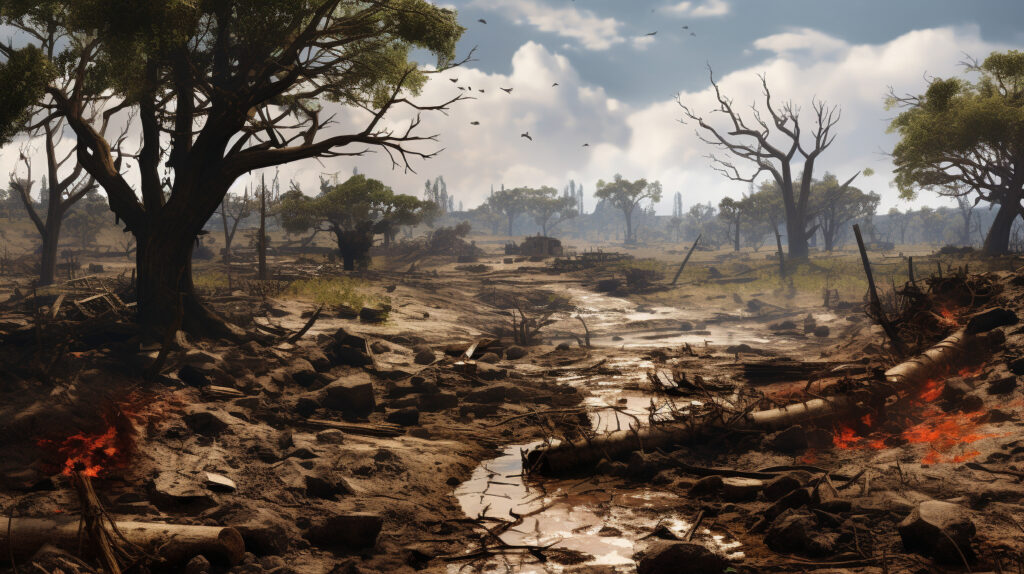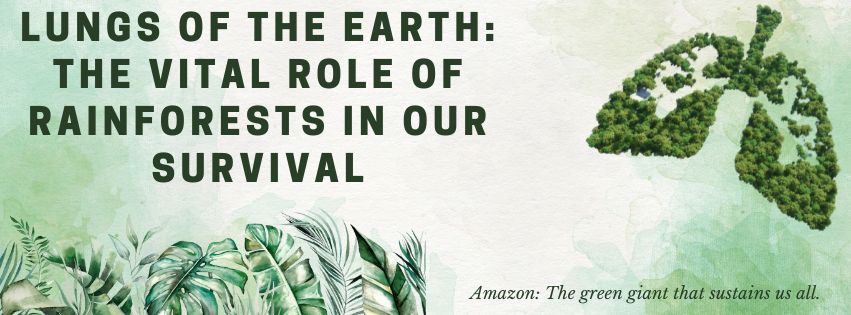Rainforests the most famous region known to every individual on globe. We have been studying about it or reading about this forest in some or other way. So, in this article we’ll explore why “Rainforest” is critical in maintaining environmental conditions.
We commonly refer Rainforest as “Lungs of the Earth”, but why?
Its due to the fact that they play a vital role in producing oxygen, absorbing carbon dioxide, and regulating global climate. But how can they do that. This is possible due to their dense, lush occurring habitat. They are found near the equator, with high rainfall and an incredible diversity of life. Covering just 6% of the Earth’s surface, they are home to more than half of the planet’s plant and animal species.
These ecosystems are also biodiversity hotspots, supporting millions of species, many of which are found nowhere else. Rainforests stabilize the climate, prevent soil erosion, and provide essential resources such as fresh water, food, and medicine, making them indispensable to the health and balance of the global environment.
https://view.genially.com/611fc2ec135ad10d95258819/interactive-image-rainforests-of-the-world
To start with let’s first understand where is this rainforest located.
Rainforests thrive near the equator, where warm temperatures and consistent rainfall create ideal conditions for dense, lush vegetation. Most of these forests exist in tropical regions, including the Amazon Basin in South America, the Congo Basin in Africa, and vast areas of Southeast Asia.
Smaller rainforests also exist in Central America, Madagascar, and the Pacific Islands. These regions lie in the tropics, between the Tropics of Cancer and Capricorn, where sunlight and precipitation are abundant year-round, which promotes their unique ecosystems.
Some animals share same name but have completely different characteristics do read for more info –
Rainforest – “Lungs of Earth” what’s the reason for this label?
They are named so due their vital role in maintaining the balance of the planet’s atmosphere. Through the process of photosynthesis, trees and plants in rainforests absorb carbon dioxide (CO₂) from the air and release oxygen (O₂), which is essential for life. This oxygen production, combined with their ability to store large amounts of carbon, makes rainforests a necessity to global ecosystems. Rainforests produce about 20% of the world’s oxygen, but organisms within the forest reabsorb most of it.
However, their function as a carbon sink, stabilizing the nature of the climate and regulating the quality of the Earth’s air is crucial. Without rainforests, natural processes would fail to regulate the delicate balance of gases in the atmosphere, disrupting life on Earth as we know it.
Uncovering the Hidden Benefits of Rainforests
We recognize that rainforests boast astonishing biodiversity and produce vast amounts of oxygen. However, their contributions extend far beyond what is immediately visible.
These ecosystems provide countless hidden benefits essential to life on Earth.
Rainforests regulate the climate, absorb carbon, and provide life-saving medicines, making them essential to the planet’s health. Their complex ecosystems support biodiversity and sustain life in countless ways.
Their lesser-known roles in stabilizing climate patterns, supporting local cultures, and fueling scientific discovery underscore how invaluable they are to our world.
Let’s explore these hidden benefits and figure out their unique aspects.
1. Carbon Sequestration and Mitigating Climate Change :
Rainforests has a critical role in carbon sequestration(a process of absorbing and storing carbon dioxide from the atmosphere) as it acts as sink of carbon in the atmosphere. These dense forest through higher photosynthetic rate continuously absorb carbon dioxide producing great amount of oxygen by using sunlight which helps in their growth and development. This method effectively helps reducing carbon concentration naturally.
The vast biomass of rainforests—trunks, branches, leaves, and roots—serves as a significant carbon sink, storing carbon for decades, even centuries. The soil beneath the rainforest also acts as a storage site, trapping carbon in organic matter. This ability to trap and lock carbon helps to reduce the amount of greenhouse gases in the atmosphere, helping to lessen the effects of climate change. By this natural process of engulfing carbon climate remains stable in longer run thus protecting it for future generations.
Read more about Carbon Sequestration –
https://www.britannica.com/technology/carbon-sequestration
2. Rainforests – Epicenter of Ecosystem Richness
Rainforest is home for amazing varieties of life forms making it remarkable hotspot for biodiversity on Earth. Despite covering only about 6% of global surface it harbors more than 50% of all terrestrial species. This dense ecosystem nurtures countless plants, animals, fungi as well as microorganisms due to its commending warm and moist climatic conditions. The complex structure of rainforest and incredible diversity creates wide range of habitats.

Rainforests provide critical ecosystems for both common and rare species, many of which are found nowhere else on Earth. From the tall trees where animals like monkeys, birds, and insects dwells to the forest floor filled with fungi and small mammals, every layer of the rainforest contributes to a dynamic web of life.
As biodiversity hotspots, rainforests play a vital role in maintaining ecological balance. They regulate nutrient cycles, support pollination and seed dispersal, and ensure the survival of species critical to ecological health. In addition, they are invaluable for scientific discovery, providing insights into evolution and potential medicines.
3. Dense Forest Supports Sustenance of Local Economies
Rainforests play a foundational role in supporting local economies, especially for millions of people living in or near the habitat. These forests provide a direct source of food, water, shelter, and income, making them essential for sustaining life and supporting economic growth. They help maintain livable conditions by regulating the climate and preserving biodiversity. For indigenous communities, rainforests are more than just a means of survival. They are deeply intertwined with cultural identity, traditions, and a way of life passed down through generations.
Multiple communities rely on rainforests to obtain their day to day essential resources like nuts, seeds, edible plants as well as on hunting and fishing activities. These forests provide numerous raw materials like wood for building houses, plant fibers for weaving, natural resins for adhesives and waterproofing.
Many indigenous groups prepare medicines from plants in this region, this tradition is passed down in them through generations.
Rainforests also contribute to assorted products to local and global markets. These products include rubber, honey, cocoa, coffee and essential oils which are harvested sustainably and sold in markets.
Rainforests attract tourists from all over the world, generating revenue through guided tours, hospitality services, and conservation projects. Ecotourism provides jobs in local communities while promoting the conservation of these critical ecosystems.
Challenges to Rainforests Survival
Human activities is one of the primary cause of degradation of rainforests. The common hazard like deforestation for agriculture, logging, mining, and urbanization destroy millions of acres each year. These activities not only destroy habitats but also accelerate climate change by releasing stored carbon into the atmosphere. Let’s analyze these key threats to understand how these actions jeopardize the ecosystem but also alter the environmental stability.
1. Rainforest Destruction: The Devastating Impact of Deforestation
It is the most pressing threat as it occurs on vast areas clearing acres of forest agriculture, cattle ranching, logging etc.
Large scale farming for crops like soybean, palm oil and coffee millions of hectares are cleared annually. Deforestation is not done only for farming crops but also for pasturing cattle. Timber is one the most demanding resource available in rainforest, logging both legally and illegally is depleting valuable tree species.

2. Mining and Resource Extraction :
Rainforests are one of the huge reserves of minerals and natural resources, which brings it under radar of mining activities. These mining activities destroy land and contaminate water sources with toxic chemicals like mercury bringing life under threat.
It also holds stocks of oil and gas, which attracts attention for their extraction leading to deforestation, polluting environment and habitat destruction creating long term impact on local communities and wildlife.
3.Infrastructure Development
The construction of roads, dams, and urban settlements in or near rainforest areas fragments habitats, isolates species, and exposes previously untouched regions to further exploitation. The continuous human encroachment is leading to shrinking of forestal lands thus reduction of free spaces for various living entities in the region.
4. Fires
Some fires occur naturally, while many are intentionally set to clear land for agriculture. These fires often spread uncontrollably, destroying vast areas and releasing stored carbon back into the atmosphere.
Every year, wildfires burn millions of hectares of land, creating drought conditions and making the region more vulnerable to further fires. These fires further also cause rise in emission of carbon dioxide, a potent green house gases contributing to global warming.
5. Population Pressure
The increasing human population near rainforests is placing immense pressure on these fragile ecosystems. As people expand farmland, extract natural resources, and build settlements, the risk of deforestation and habitat destruction continues to grow.
Increased human activities degrades soil, water and air quality. Litter and microplastics are beginning to infiltrate even remote rainforest ecosystems. Pesticides and fertilizers from agricultural lands contaminate nearby rivers and forests.
The Future of Our Planet Lies in the Lungs of the Earth-“Rainforests”.
In conclusion, rainforests play an essential role in sustaining life on Earth. They function as oxygen factories, biodiversity reservoirs, and climate regulators, making their protection crucial for the planet’s future.
Preserving these ecosystems is not just an environmental concern, it is a necessity for our survival. By understanding the vital role of rainforests, we can recognize their immense contribution to our planet’s well-being. Taking action to protect them ensures they continue to sustain life for generations to come.
Saving Rainforests: A Global Priority for a Healthier Planet

Leave a Reply